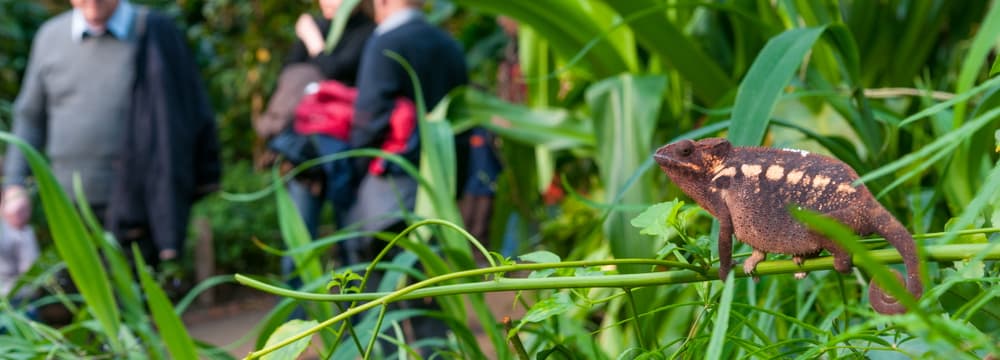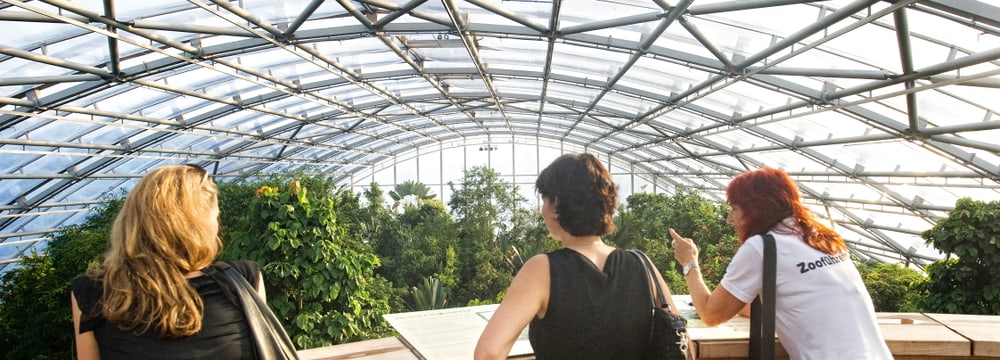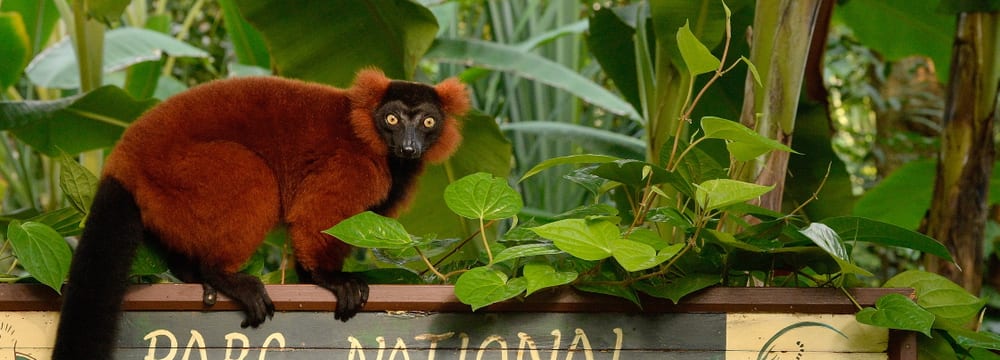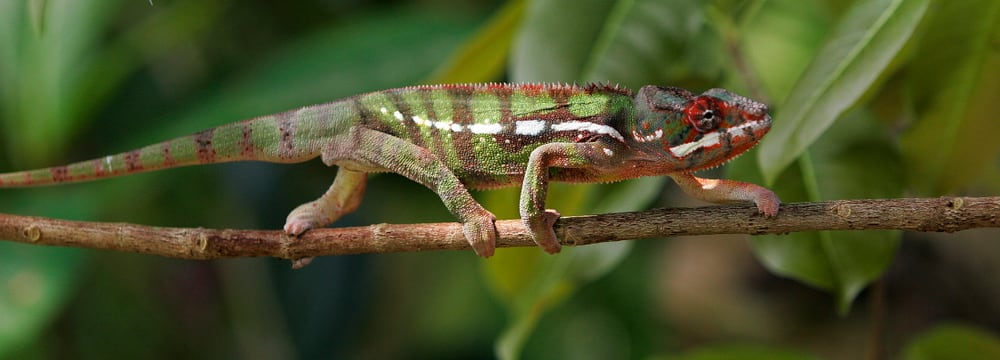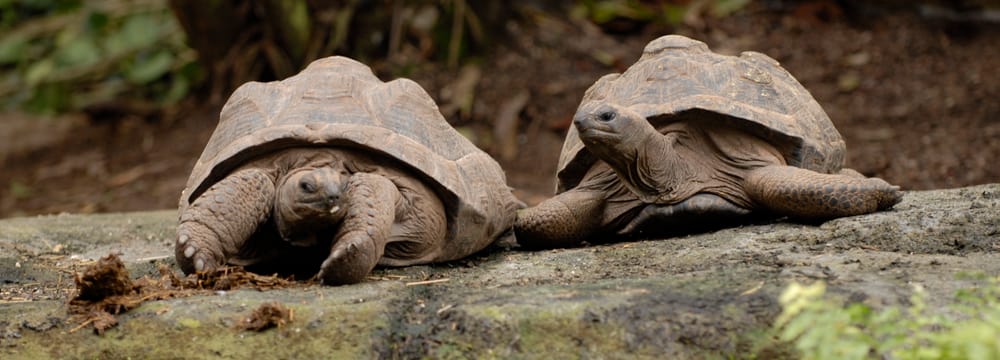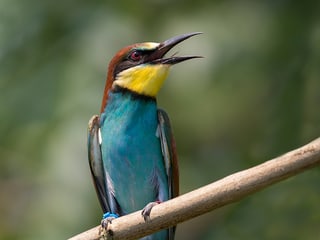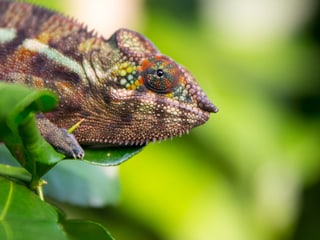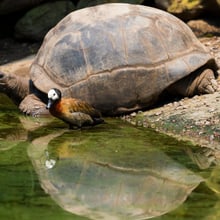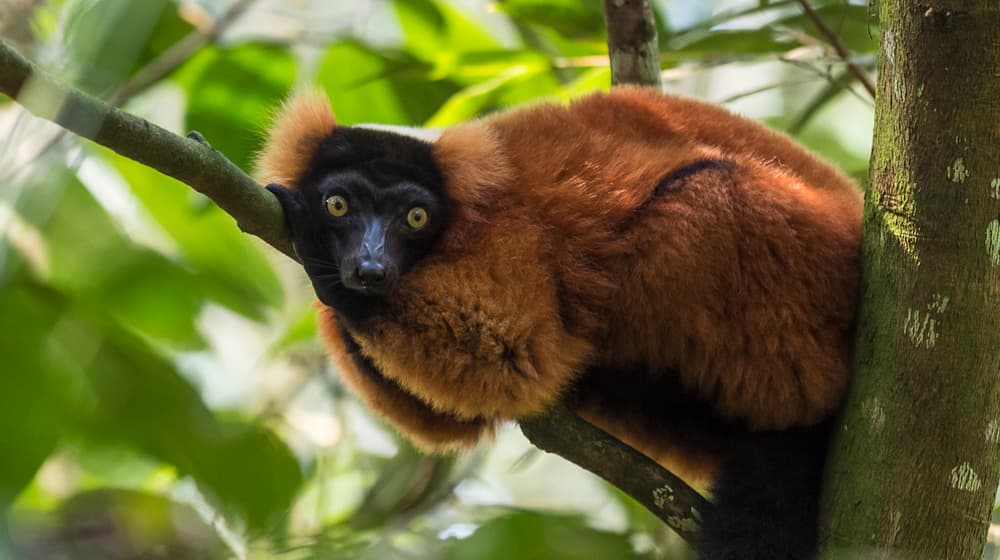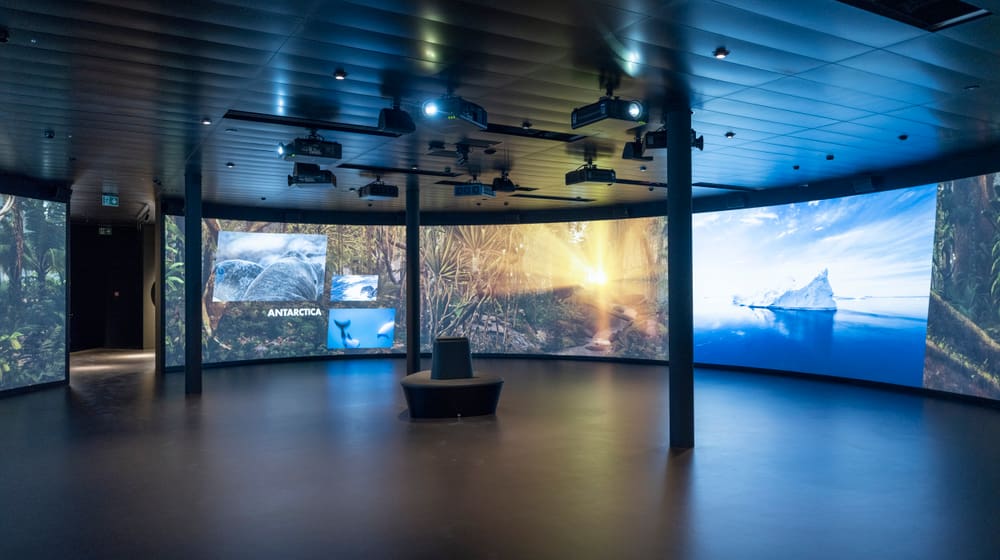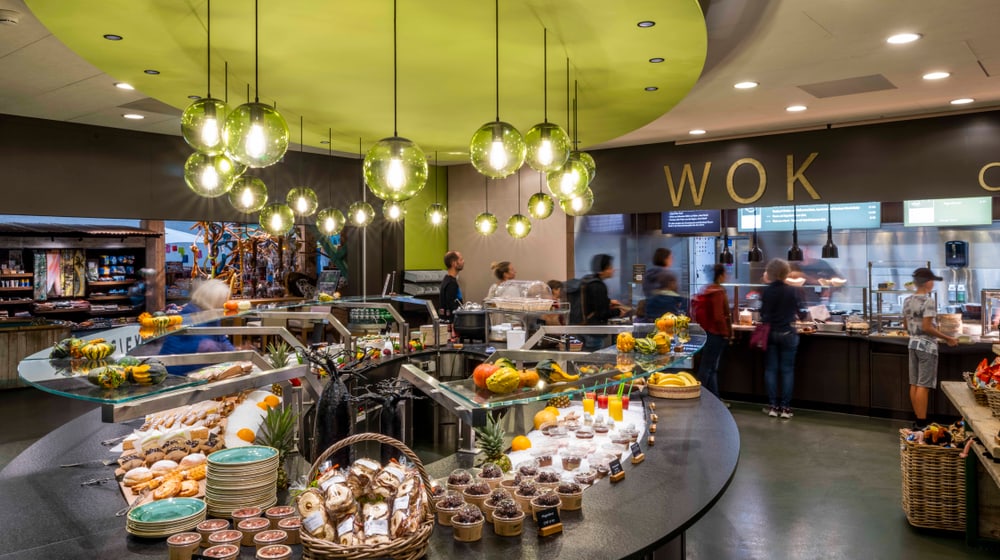Masoala Rainforest
The Masoala Rainforest was opened in 2003. It marks a milestone on Zoo Zurich’s journey to becoming a conservation centre. In the «mini rainforest ecosystem» visitors experience animals in their natural habitat. Since 2013, the Masoala treetop walkway also allowes visitors a view from the treetops.
Around 40 vertebrate species (approx. 500 individuals) live together in the Masoala Rainforest.
- Mammals: red ruffed lemur, Goodman’s mouse lemur, Rodrigues fruit bat
- Birds: herons and ibises, waterfowl, wading birds, galliformes, parakeets, doves, couas, bayas, pitta-like ground-rollers, etc.
- Reptiles: cameleons, geckos, tortoises, gerrhosauridae
- Amphibians: Madagascar tomato frog
- Fish: Malagasy cichlid, Marakeli tilapia, Menarambo cichlid, silverside
- Insects and spiders (over 50 species): longhorn beetles, millipedes, etc. as well as species for biological plant protection
Out of the above, the following species are part of international breeding programs: Bernier’s teal, Goodman’s mouse lemur, hamerkop, Meller’s duck, red ruffed lemur, and Rodrigues fruit bat.
Find information on all these animal species in our animal lexicon:
Listen to the sounds of Masoala Rainforest:
Over 500 plant species grow in the Masoala Rainforest. Roughly 80 percent of them can be found in Madagascar. Nearly 40 species are listed on the IUCN Red List of Threatened Species by the International Union for the Conservation of Nature and Natural Resources (iucnredlist.org). The Masoala Rainforest is Zoo Zurich’s contribution to the global strategy for the protection of plants by Botanic Gardens Conservation International (bgci.org).
Plant protection
A functioning ecosystem has neither pests nor beneficial organisms. The populations of the various species of animals and plants are in equilibrium; each species contributes. We attempt to reach a natural balance in our Masoala Rainforest. But the system is small, which makes it prone to error. Its biological balance is monitored continuously. If necessary, natural antagonists (beneficial organisms) are introduced into the Masoala Rainforest. They include roundworms (nematodes) to control the caterpillar and snail populations, ichneumon flies and chalcid wasps for regulating greenhouse whiteflies, mealybugs, scale insect and thrips, and ladybugs, also for controlling mealybugs. Our use of plant protection products is in strict compliance with organic farming regulations. Conventional insecticides (poisons) are never used.
Tree nursery
Zoo Zurich operates a tree nursery in the Masoala Rainforest. In close cooperation with the Silo National des Graines Forestières SNGF, the responsible authority for the management and development of forest genetic resources in Madagascar, Dr Martin Baumert was granted permission to collect seeds in the Masoala region of Madagascar for cultivation in Zurich. Every year, the tree nursery produces more than a hundred young trees and bushes that are pricked out in the Masoala Rainforest.
Zoo Zurich focuses particularly on propagating precious woods. They are typical of the Masoala region, but were considered impossible to cultivate in Madagascar. Zoo Zurich has successfully propagated rosewood and ebony from seeds. It passed its knowledge on to the SGNF and, today, rosewood and ebony are being planted again in Madagascar. This was considered impossible before 2003.
Masoala Rainforest is heated and cooled with a sophisticated system, which keeps energy consumption levels low. 50 geothermal probes, each 250 meters deep, generate the majority of the required heat through a heat pump. Additional heat, also CO2-neutral, is supplied by a central woodchip heating system when required. Two cisterns with a capacity of 500 cubic meters each collect rain water for irrigation. The Masoala Rainforest requires up to 140,000 liters of water per day in the summer. During the winter, the required amount of water is more modest at only 40,000 liters per week.
Some figures
- Length: 120 meters
- Width: 90 meters
- Height: 30 meters
- Volume: 200,000 cubic meters
- Foil roof: 14,000 square meters
- Steel girders: 10, vertically aligned
- Temperature: 20 to 30 degrees Celsius
- Humidity: approx. 80%
One of the special attractions of the Masoala Rainforest is its treetop walkway with two towers at 10 and 18 meters, respectively. It opened in 2013 on the occasion of the 10th anniversary of Masoala Rainforest. The landscape architects, Günther Vogt and Lars Ruge, were inspired by the structure of insect cocoons. The two steel towers are covered in lianas and epiphytes, and a kapok tree grows in the middle of the large tower.
Video: Zoo Zürich.
Videos of Masoala Rainforest an its animals (Youtube-Playlist).
